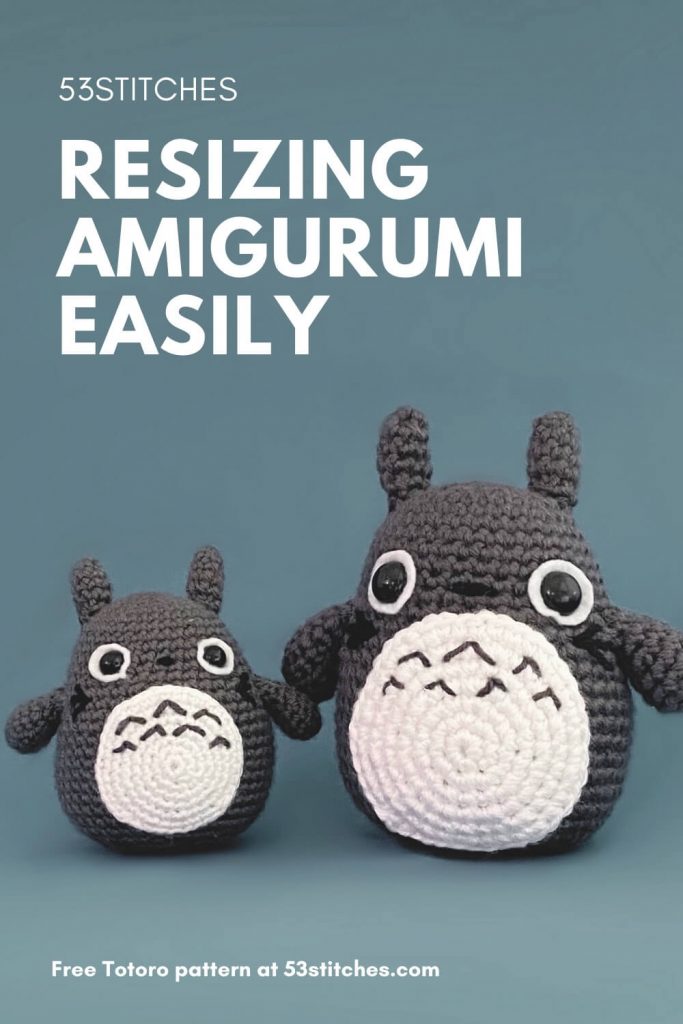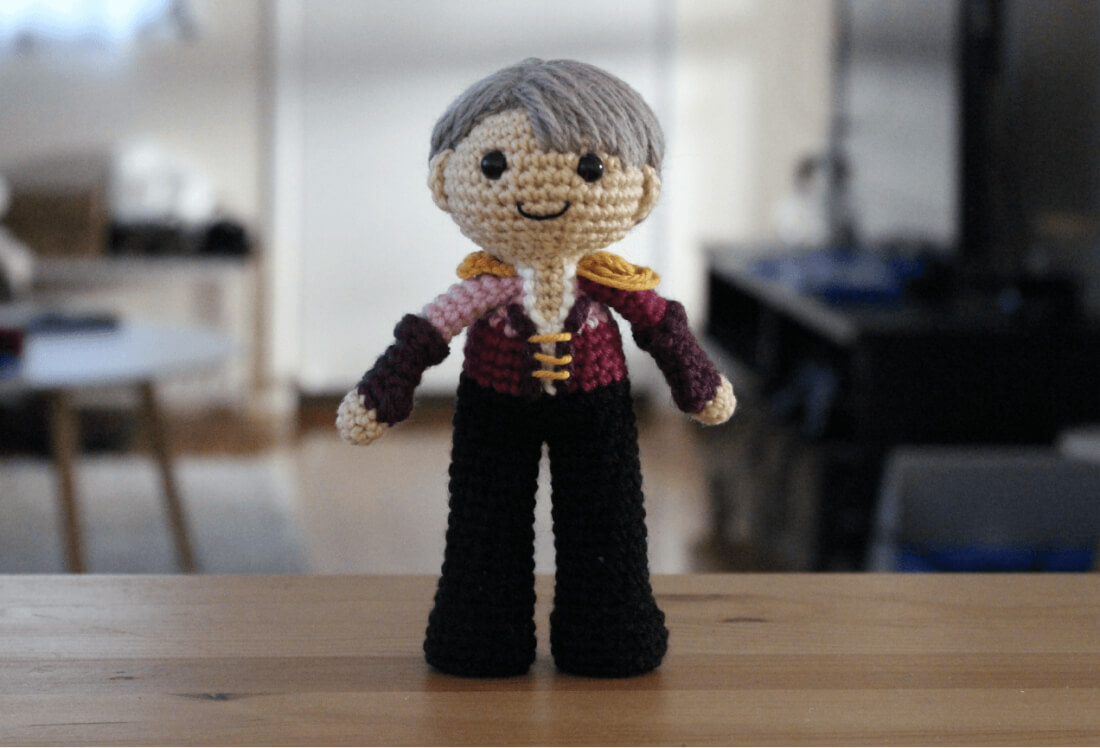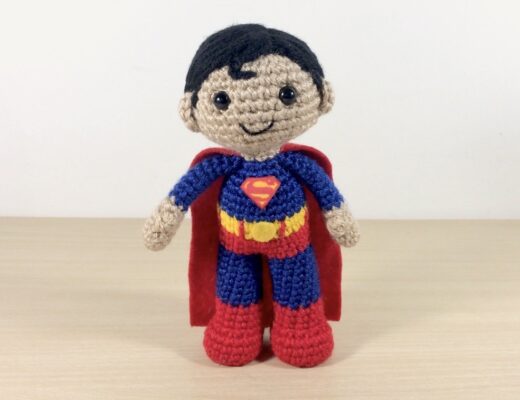One of my favourite things about crochet is how flexible it is. I get a huge kick out of seeing the different versions of dolls that creators all around the world make – whether they make adjustments, use different materials or simply have a different style, each creator puts their own spin on the same pattern to create a unique end product. Today we’re going to learn how to resize amigurumi patterns by either scaling them up or down!
It’s one of the easiest ways to transform the look of a particular pattern. And luckily, it’s pretty easy to scale a pattern up or down without needing to do any weird maths or adjustments to the pattern at all! Today I’ve got a little family of Totoro’s I made to demonstrate. Each of them used the exact same Totoro pattern available on the blog here.
Typically, I make my amigurumi projects using 8ply (basically DK) yarn that’s most commonly available in Australia, with a 3.00mm crochet hook. The original grey Totoro below was made with those materials, as well as a pair of 10mm safety eyes.
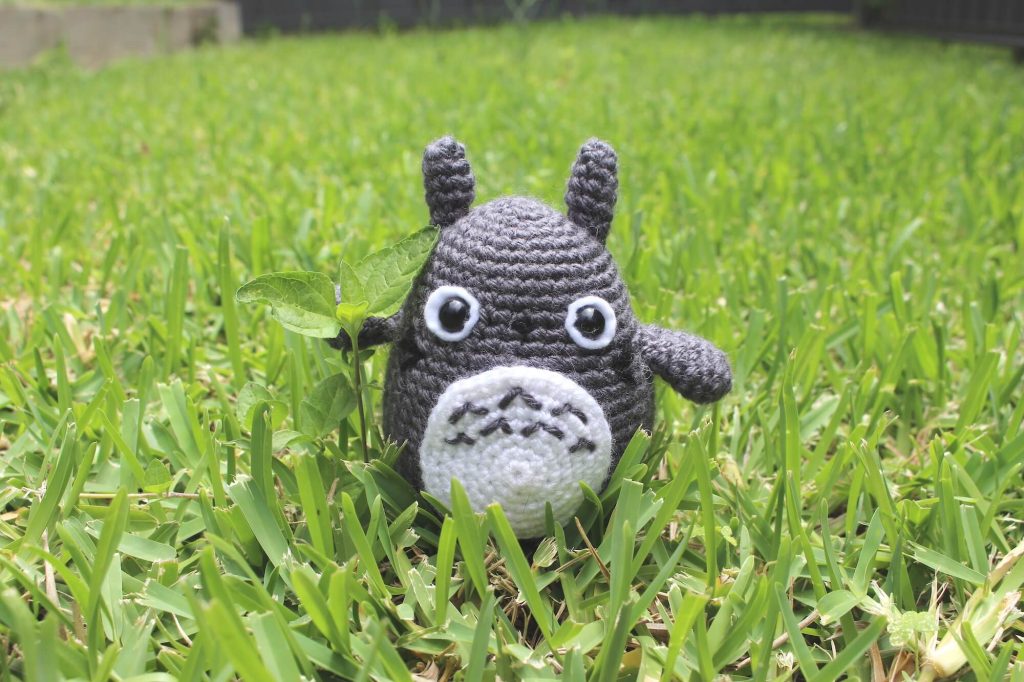
Scale a pattern to be larger
One day I thought to myself, wow, Totoro is such a perfect round shape, excellent for hugging. If only this crochet doll was a little bit bigger! Luckily, this is a problem I can easily solve.
The simplest way I’ve found to make an amigurumi pattern larger is to double up the yarn used to create the doll, and additionally bump up the size of the crochet hook used.
And so, this large Totoro version was made by holding 2 strands of the same DK yarn I used in the original pattern. I also bumped up the crochet hook size to 4.5mm from 3.00mm. You could probably use an even larger hook – so long as the stitches can be made tight enough that the stuffing doesn’t show through.

I then swapped out the 10mm safety eyes for 15mm safety eyes. This particular version requires a lot more stuffing, and your stitches will look a lot larger, however, since we’re not adjusting the pattern at all, the doll will look as expected – just scaled up!
Another benefit of scaling patterns up this way is that they work up nearly as quickly as the original pattern. I found it takes a little bit longer, just because working with two strands of yarn made the stitches a little thicker and tighter to work into. You can see our larger Totoro next to the original one – look how much he’s grown!
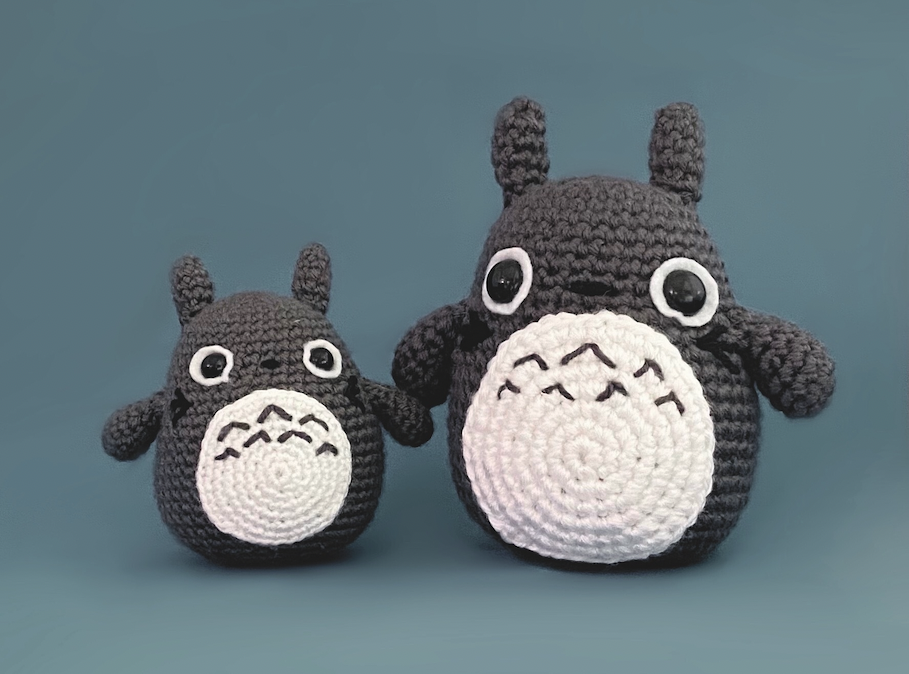
Scale a pattern to be smaller
Now, to make a pattern smaller we can use a similar theory. Obviously, no one wants to be sitting here halving strands of yarn. But, most yarn will come basically pre-halved for you – in this case I swapped out my usual 8ply yarn for a 4ply yarn! The same as going from DK weight yarn to fingering weight. For this particular doll I decided to keep the 3.00mm crochet hook, rather than swapping to a smaller hook. But you could easily make the hook smaller to help shrink the pattern that little bit more.
I decided to make a little all-white Totoro to join with the others. For this guy, I left off his belly and arms to match the more simplified design from the movie.
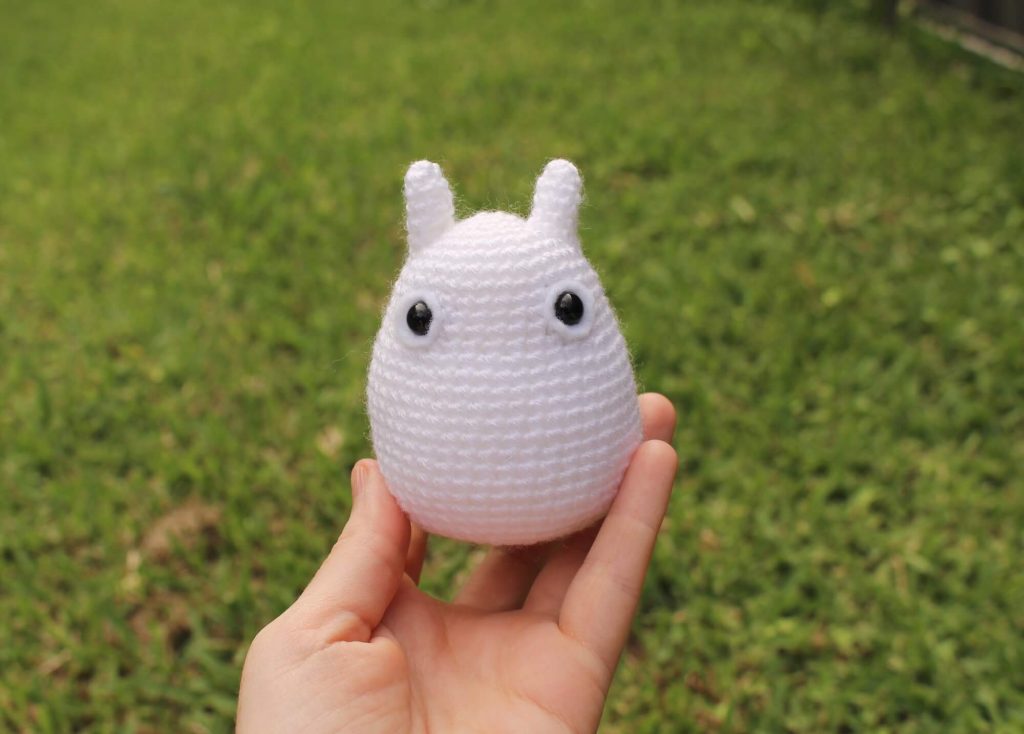
By now we’ve got a nice big squeezable grey Oh-Totoro, a tiny adorable white Chibi-Totoro – all that’s missing was to remake the original pattern using blue instead of grey, and we’ll have a Chuu-Totoro to complete the family. For this version of the regular pattern, I only did one row of triangles on his belly – but that was the only adjustment!
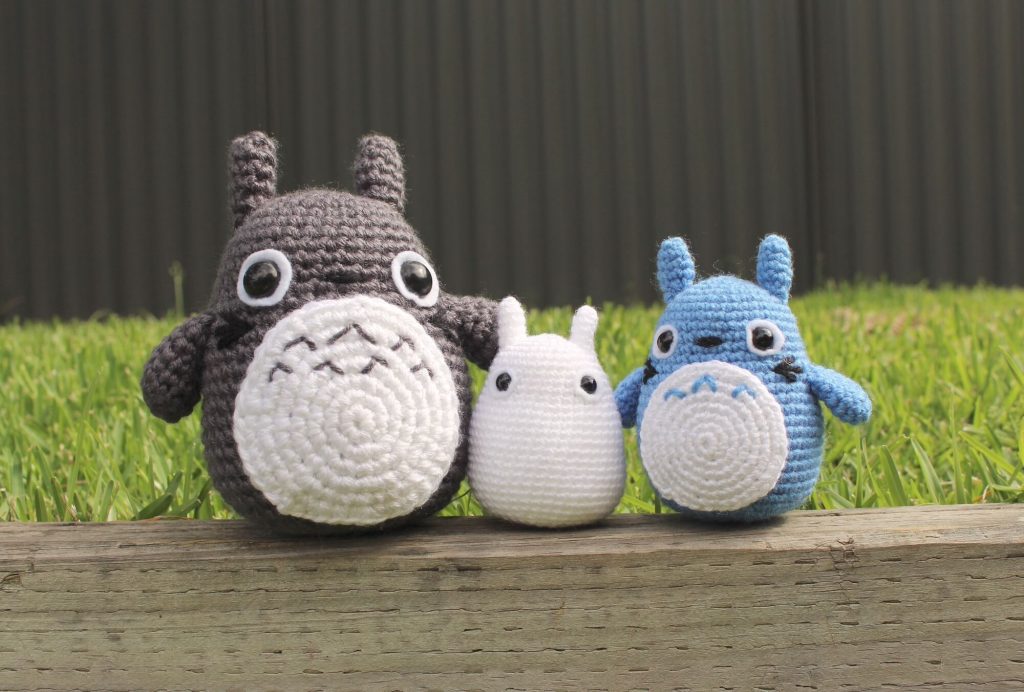
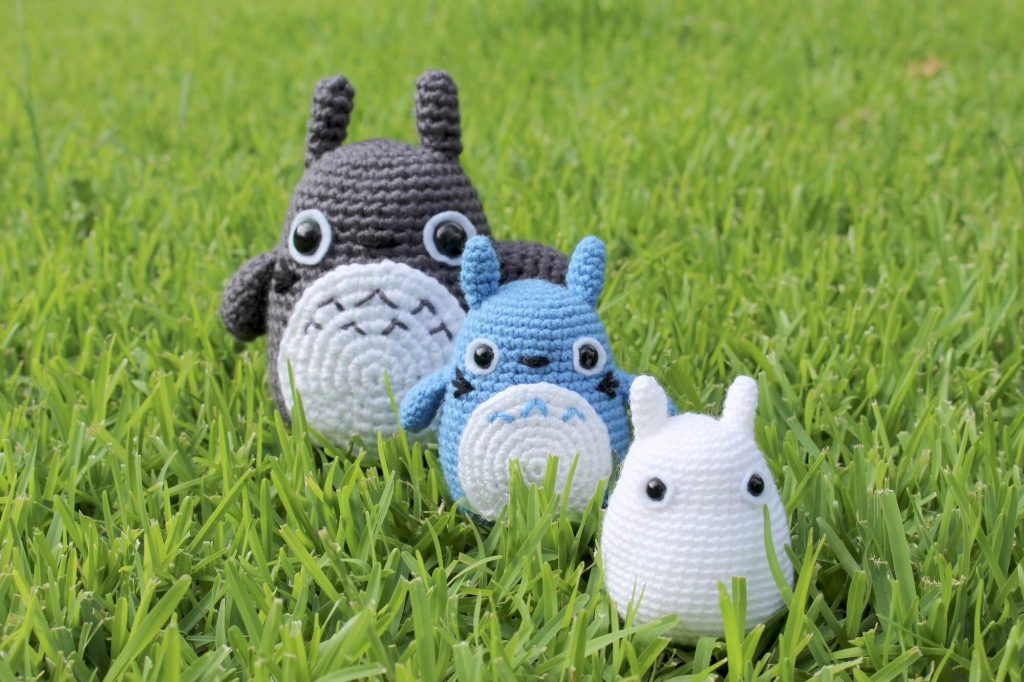
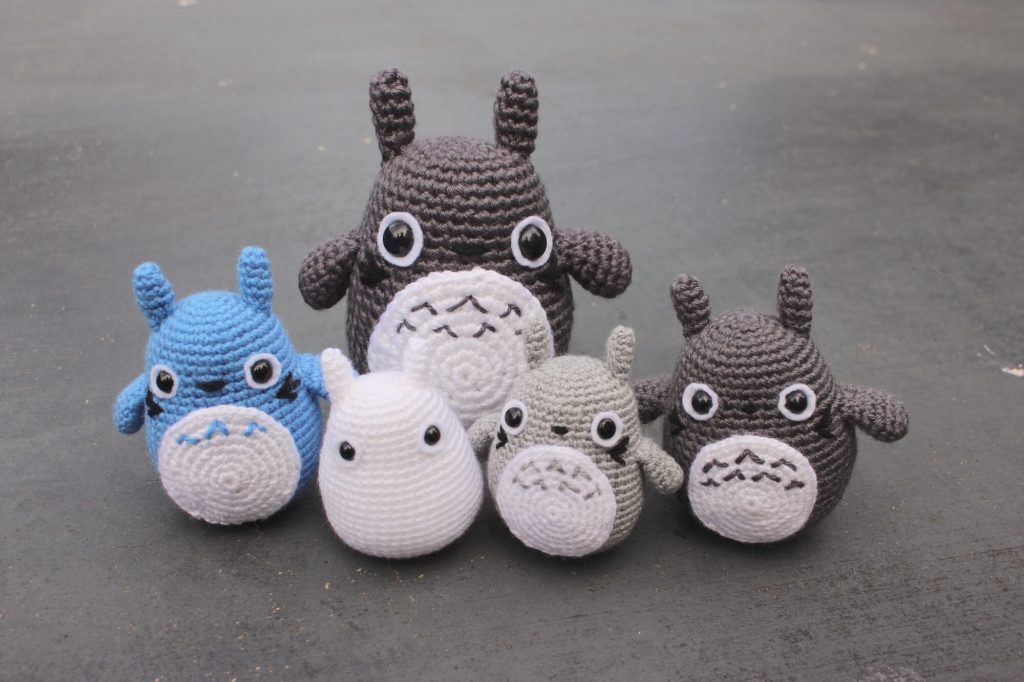
This is a really simple way to customise most patterns you come across to make it perfect for whatever use you have in mind. I hope it’s helped and inspired you to get experimenting!
